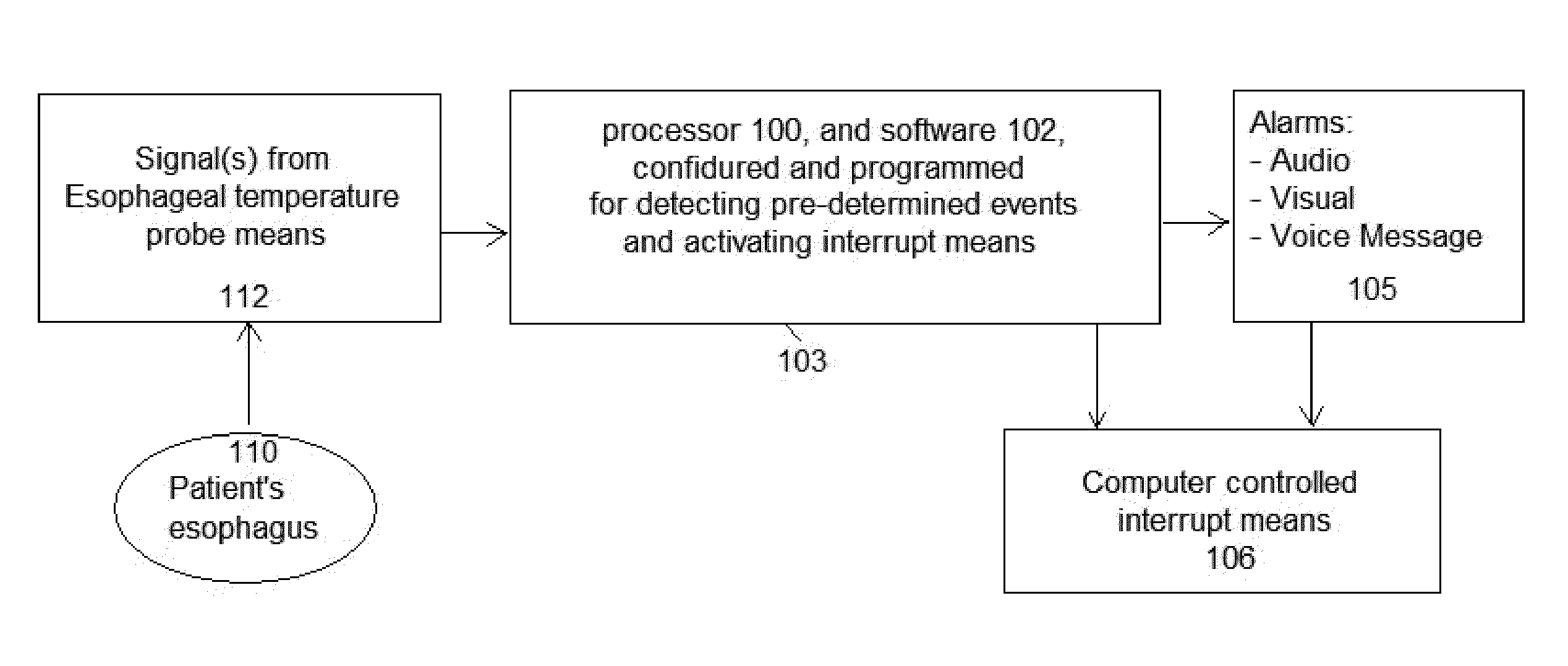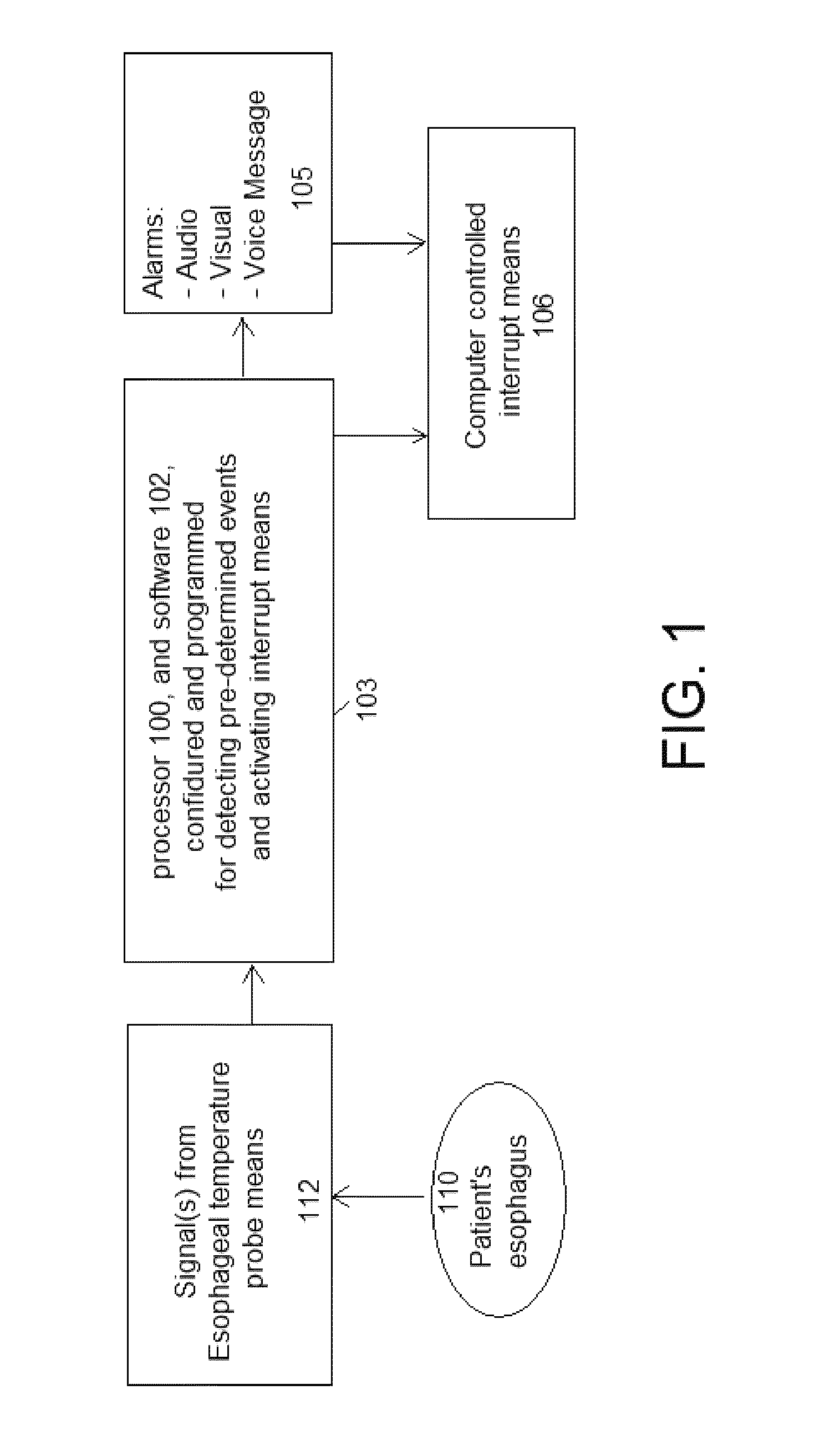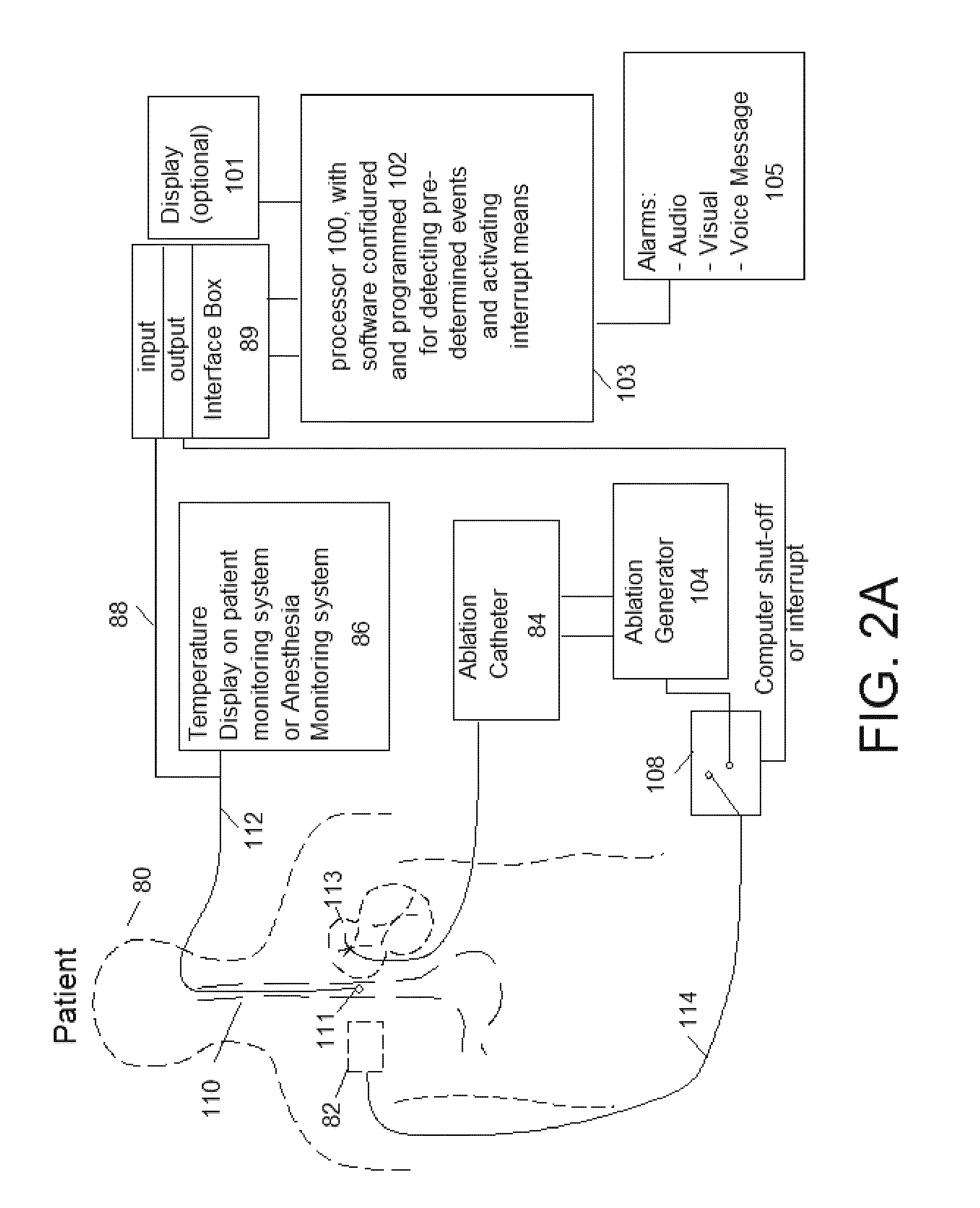Methods and systems of temperature based alarms and/or automatic interrupt (shutoff) during a cardiac ablation procedure
a technology of automatic interrupt and cardiac ablation, which is applied in the field of atrial fibrillation ablations, can solve the problems of increased morbidity and mortality, increased atrial fibrillation, and general decrease in the quality of life of those afflicted with atrial fibrillation, and achieve the effect of minimizing esophageal temperature related injury and esophageal injury during ablation
- Summary
- Abstract
- Description
- Claims
- Application Information
AI Technical Summary
Benefits of technology
Problems solved by technology
Method used
Image
Examples
Embodiment Construction
[0083]The following description is of the best mode presently contemplated for carrying out the disclosure. This description is not to be taken in a limiting sense, but is made merely for the purpose of describing the general principles of the disclosure. The scope of the disclosure should be determined with reference to the claims.
[0084]This disclosure is targeted to preventing or minimizing thermal injury to the esophagus or the vagus nerve(s) during ablation in the atrium, for treatment of atrial fibrillation. Accordingly, as shown in conjunction with FIG. 1 signals are typically and routinely recorded from an esophageal temperature probe 112 which is in a patient's esophagus 110.
[0085]The temperature probe may comprise a single or multiple thermisters. The multiple thermister probe may comprise any number of thermisters. In one preferred embodiment, the temperature probe may have ten thermistors. In other embodiments the probe the probe may have any number of thermisters. The go...
PUM
 Login to View More
Login to View More Abstract
Description
Claims
Application Information
 Login to View More
Login to View More - R&D
- Intellectual Property
- Life Sciences
- Materials
- Tech Scout
- Unparalleled Data Quality
- Higher Quality Content
- 60% Fewer Hallucinations
Browse by: Latest US Patents, China's latest patents, Technical Efficacy Thesaurus, Application Domain, Technology Topic, Popular Technical Reports.
© 2025 PatSnap. All rights reserved.Legal|Privacy policy|Modern Slavery Act Transparency Statement|Sitemap|About US| Contact US: help@patsnap.com



